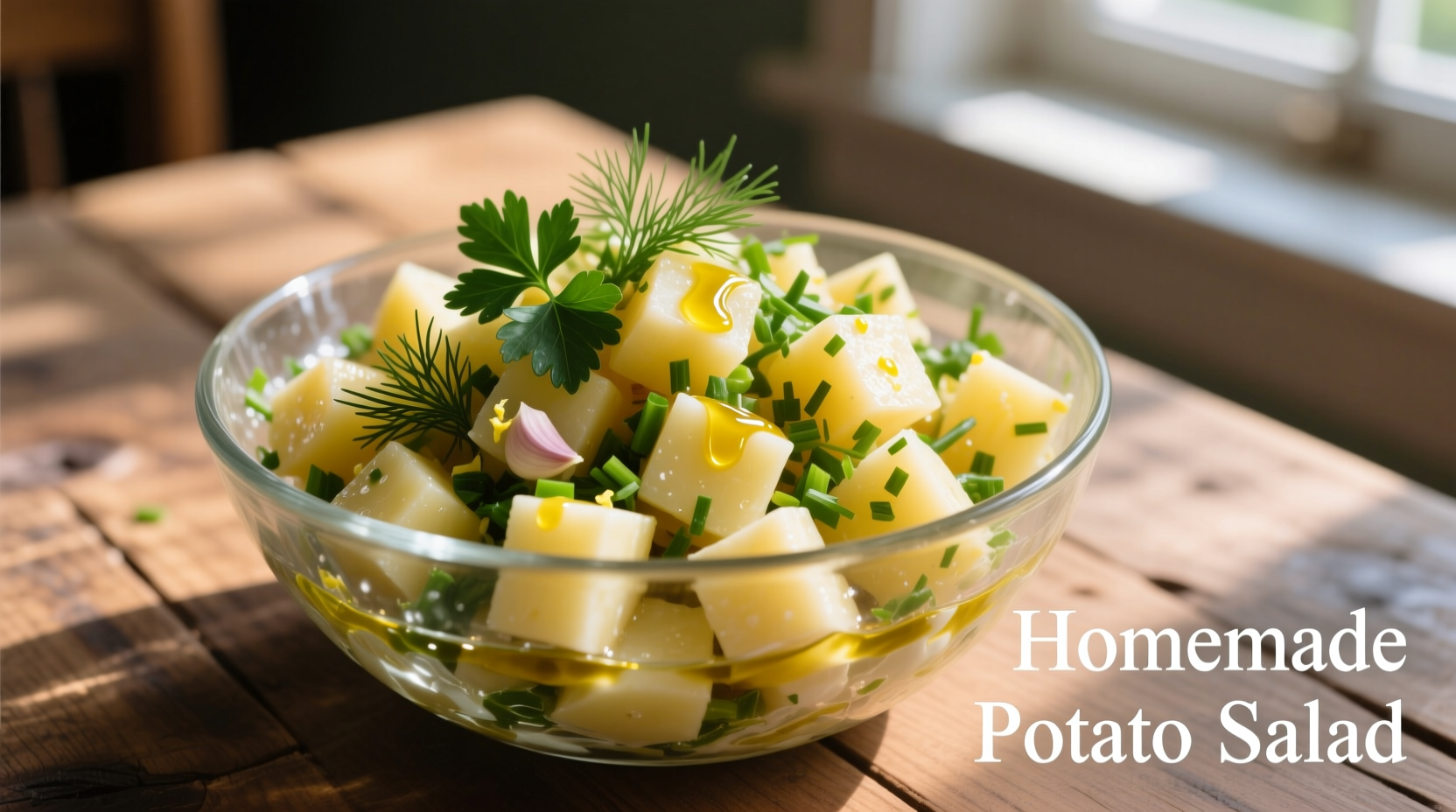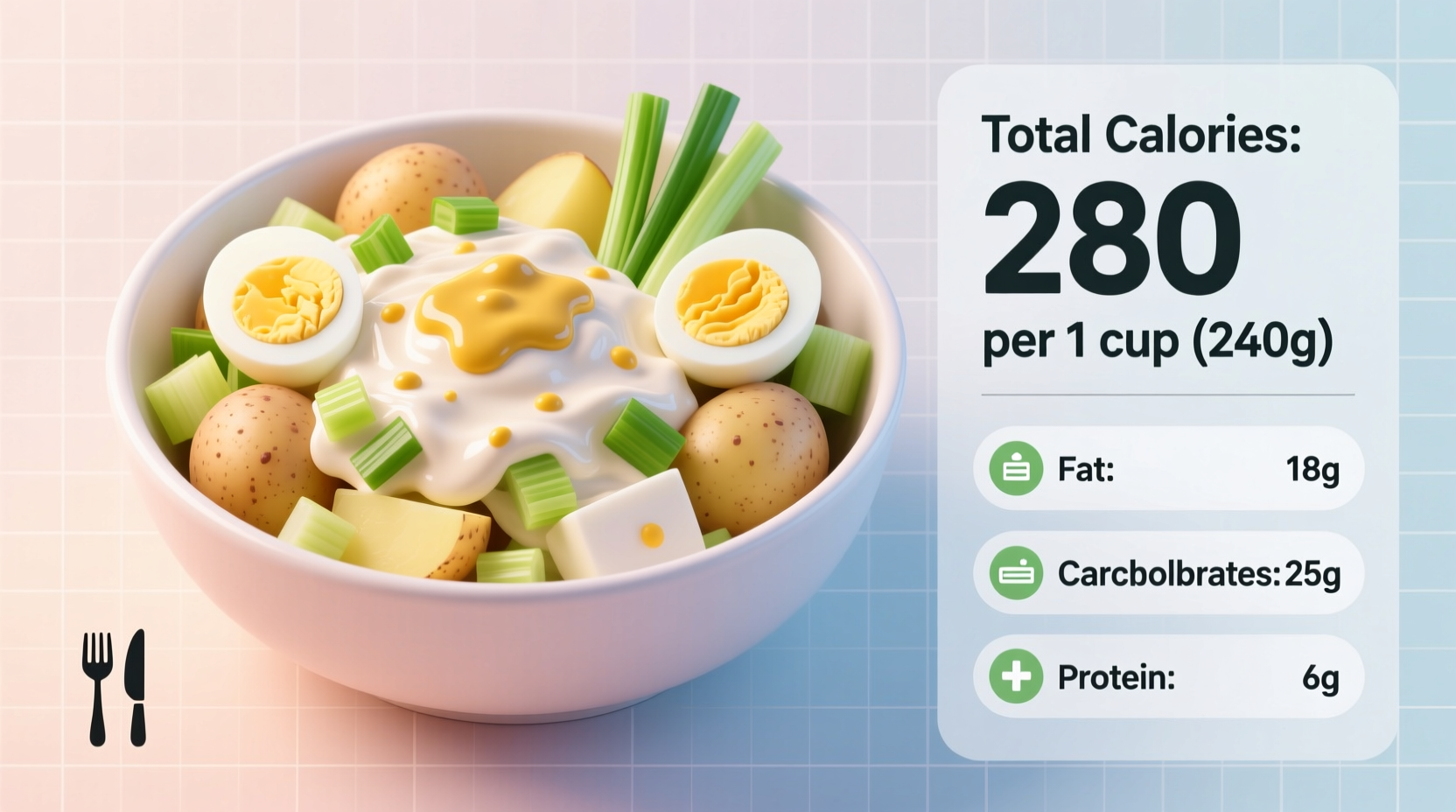Traditional potato salad contains approximately 350-400 calories per cup (230g), but this can vary significantly from 200 to 550 calories depending on ingredients and preparation method. Lighter versions with vinegar-based dressings start around 200 calories, while restaurant-style versions with extra mayonnaise and bacon can exceed 500 calories per serving.
Understanding the calorie content of potato salad is essential for meal planning, dietary management, and making informed food choices. Whether you're preparing it for a summer barbecue, packing lunch, or ordering at a restaurant, knowing exactly what you're consuming helps maintain your nutritional goals without sacrificing enjoyment of this classic side dish.
What Determines Potato Salad's Calorie Count?
The calorie range in potato salad varies dramatically based on several key factors. Unlike standardized packaged foods, potato salad recipes differ widely across regions, family traditions, and dietary preferences. Let's examine what causes these significant calorie differences:
| Variation Type | Calories Per Cup (230g) | Key Ingredients | Fat Content |
|---|---|---|---|
| Traditional (mayo-based) | 350-400 | Mayonnaise, boiled potatoes, eggs, celery | 25-30g |
| Light/vinegar-based | 200-250 | Vinegar, mustard, minimal oil, fresh herbs | 10-15g |
| Restaurant-style | 450-550 | Extra mayo, bacon, sweet relish, sugar | 35-40g |
| Loaded version | 500-600+ | Mayonnaise, bacon, cheese, extra eggs | 40-50g |
How Potato Salad Recipes Have Evolved Over Time
Potato salad's nutritional profile has shifted considerably throughout its culinary history. Originally developed in Germany during the 18th century as a vinegar-based dish, early versions contained minimal fat and approximately 150-200 calories per serving. The American adaptation in the late 19th century introduced mayonnaise, dramatically increasing both flavor complexity and calorie density.
According to historical culinary records from the USDA National Agricultural Library, the average potato salad calorie count increased by nearly 40% between 1950 and 2000 as recipes incorporated more mayonnaise and additional high-calorie ingredients. Modern health-conscious adaptations have begun reversing this trend, with many contemporary recipes focusing on lighter dressings while maintaining satisfying flavor profiles.
Portion Size: The Critical Factor You Control
One of the most significant yet overlooked aspects of potato salad consumption is portion size. While recipes might yield 350 calories per cup, most people serve themselves much larger portions without realizing it. Research from the CDC's Division of Nutrition, Physical Activity, and Obesity shows that typical restaurant portions of potato salad average 1.5 cups (345g), delivering 525-600 calories rather than the expected amount.
When preparing potato salad at home, use these practical portion guidelines:
- Standard side dish portion: ¾ cup (170g) = 260-300 calories for traditional versions
- Meal component portion: ½ cup (115g) = 175-200 calories
- Light version portion: 1 cup (230g) = 200-250 calories

Nutritional Context: More Than Just Calories
While calorie count matters, understanding potato salad's complete nutritional profile provides better context for dietary decisions. A standard cup (230g) of traditional potato salad typically contains:
- Carbohydrates: 25-30g (primarily from potatoes)
- Protein: 5-7g (from eggs and sometimes bacon)
- Fat: 25-30g (mostly from mayonnaise)
- Fiber: 2-3g (from potatoes and added vegetables)
- Sodium: 400-600mg (varies significantly by recipe)
Compared to other common picnic side dishes, potato salad falls in the mid-to-high calorie range. Coleslaw typically contains 200-300 calories per cup, while pasta salad ranges from 300-450 calories depending on dressing. The advantage potato salad offers is higher satiety from its protein and fat content, which may prevent overeating other higher-calorie foods at the same meal.
Creating Lower-Calorie Potato Salad Without Sacrificing Flavor
You don't need to eliminate potato salad from your diet to manage calorie intake. Professional chefs have developed techniques to reduce calories while maintaining delicious flavor:
Smart ingredient substitutions:
- Replace half the mayonnaise with Greek yogurt (reduces calories by 25-30%)
- Use Dijon mustard for tang instead of vinegar (adds flavor with minimal calories)
- Incorporate extra vegetables like celery, red onion, and bell peppers (adds volume with few calories)
- Add fresh herbs like dill or parsley for flavor without extra calories
Preparation techniques that make a difference:
- Cool potatoes completely before adding dressing (reduces dressing absorption)
- Use a light hand when mixing (prevents breaking potatoes which increases starch release)
- Add dressing gradually until desired consistency is reached (avoids oversaturation)
- Chill thoroughly before serving (allows flavors to meld without needing excess dressing)
Restaurant and Store-Bought Options: What to Watch For
When ordering potato salad at restaurants or purchasing pre-made versions, be aware that these often contain significantly more calories than homemade versions. A study published in the USDA Food and Nutrition Service research found that restaurant potato salad averages 487 calories per cup, with some versions exceeding 600 calories.
Look for these indicators of higher calorie content when selecting store-bought or restaurant potato salad:
- Extremely creamy texture (indicates extra mayonnaise)
- Sweet taste (suggests added sugar)
- Visible layers of dressing separate from potatoes
- Additional high-calorie ingredients like bacon, cheese, or fried onions
When possible, ask about preparation methods or check nutrition information. Many establishments now offer lighter versions specifically designed for health-conscious customers.
Practical Tips for Enjoying Potato Salad Mindfully
Here's how to incorporate potato salad into your diet without compromising your nutritional goals:
- Measure portions rather than serving family-style to avoid overeating
- Pair with protein-rich main dishes to balance the meal
- Choose vinegar-based versions when available for lower calorie options
- Make your own using the ingredient substitutions mentioned above
- Consider potato salad as your primary side dish rather than adding additional high-calorie sides
Remember that occasional enjoyment of traditional potato salad won't derail your dietary progress. The key is awareness and moderation. By understanding the calorie range and factors that influence it, you can make informed choices that align with your nutritional needs while still enjoying this beloved classic dish.











 浙公网安备
33010002000092号
浙公网安备
33010002000092号 浙B2-20120091-4
浙B2-20120091-4